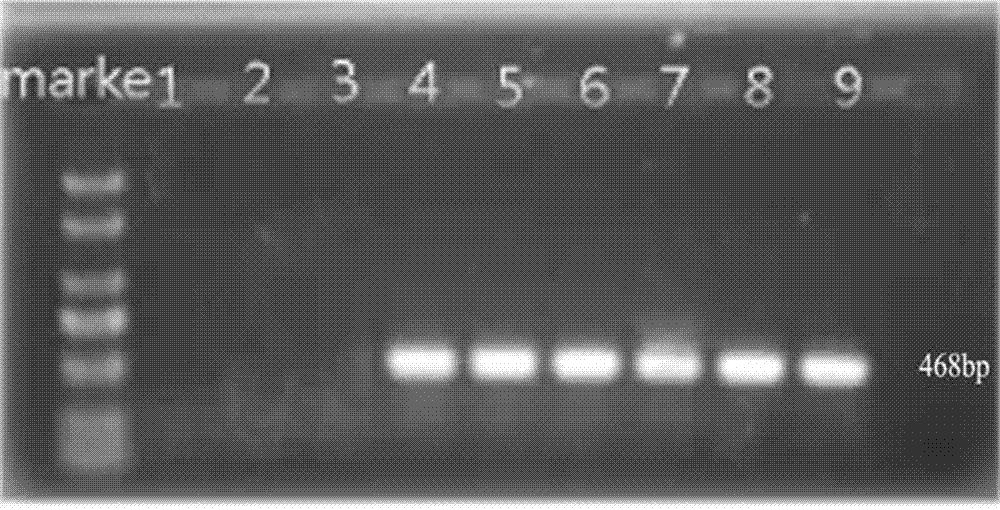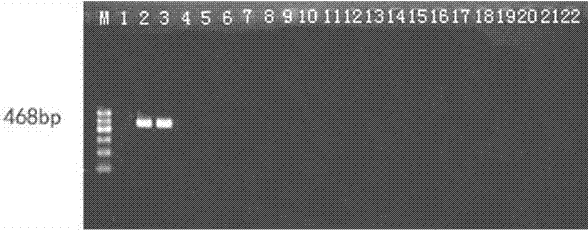Method for rapidly detecting pathogenic anthracnose of dracaena sanderiana and application thereof
A technology of anthrax and pathogenic bacteria, applied in the field of genetic engineering, can solve problems such as time-consuming, difficult to achieve pathogenic bacteria, strong experience, etc., and achieve the effect of early and effective control measures
- Summary
- Abstract
- Description
- Claims
- Application Information
AI Technical Summary
Problems solved by technology
Method used
Image
Examples
Embodiment Construction
[0020] 1. Collection of fungal hyphae
[0021] Take the preserved identified strains (C.dracaehophilum, C.cliviae, C.petchii, C.fructicola, C.karstii, C.boninense, C.asianum, C.acutatum, C.truncatum, C.brevisporum, C.aenigma , C. liriopes, C. scovillei, A.alternata, Fusarium sp., Curvularia sp., Bipolaris sp., Exserohilum sp., Drechslera sp.) were inoculated on PDA plates, grown at 25°C for 5 days, picked fresh mycelia, Inoculate in a 250mL Erlenmeyer flask filled with 1 / 3 volume of PDB. 25°C, 120 r / min, culture for 3-4 days, until a large number of mycelium clusters are formed. Filter with double gauze, rinse continuously with distilled water, blot dry with filter paper, and store in a 1.5mL centrifuge tube at -20°C for later use.
[0022] 2. Extraction of Fungal DNA
[0023] Using the improved CTAB method to extract fungal hyphae DNA, the specific steps are as follows:
[0024] (1) Take an appropriate amount of mycelium (about 0.5g) in a mortar, add liquid nitrogen and q...
PUM
 Login to View More
Login to View More Abstract
Description
Claims
Application Information
 Login to View More
Login to View More - R&D
- Intellectual Property
- Life Sciences
- Materials
- Tech Scout
- Unparalleled Data Quality
- Higher Quality Content
- 60% Fewer Hallucinations
Browse by: Latest US Patents, China's latest patents, Technical Efficacy Thesaurus, Application Domain, Technology Topic, Popular Technical Reports.
© 2025 PatSnap. All rights reserved.Legal|Privacy policy|Modern Slavery Act Transparency Statement|Sitemap|About US| Contact US: help@patsnap.com



